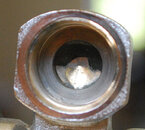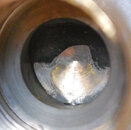If you want, I (my shop) will do the overhaul to include replacing all needed parts/orings/washers, replacement of burst disk, and O2 clean for $15 plus shipping. Shoot me a email at tanktest@gmail.com or message me here.
Myles
Myles






